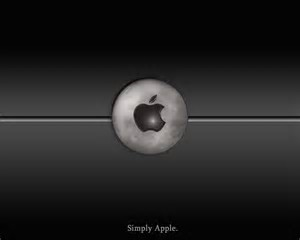3
Timeline of Chilokveri Ships (CANON)
 Nix class: Nix (1900)
Nix class: Nix (1900)
- First battleship owned by Chilokver.
 Ravage class: Ravage (1908), Ruin (1909)
Ravage class: Ravage (1908), Ruin (1909)
- First dreadnought battleships.
 Zephyr class: Zephyr (1913), Eurus (1914), Boreas (1915), Notos (1915)
Zephyr class: Zephyr (1913), Eurus (1914), Boreas (1915), Notos (1915)
- First battlecruisers, extensively modified interwar to serve as fast carrier escorts.
 Decimation class: Decimation (1915), Devastation (1917)
Decimation class: Decimation (1915), Devastation (1917)
- While modernized interwar, the Decimation-class suffered from poor turret placement and served in GW2 primarily in the shore bombardment role.
 Destruction class: Destruction (1917), Desolation (1918)
Destruction class: Destruction (1917), Desolation (1918)
- Improved derivatives of the Decimation-class, modified to server as hybrid battleship-carriers interwar to provide organic air cover.
 Calamity class: Calamity (1935), Cataclysm (1936)
Calamity class: Calamity (1935), Cataclysm (1936)
- First of the fast battleships, mounting 8x16 inch guns in four twin turrets.
 Ragnorak class: Ragnorak (1939), Armageddon (1939), Apocalypse (1941), Eschaton (1941)
Ragnorak class: Ragnorak (1939), Armageddon (1939), Apocalypse (1941), Eschaton (1941)
- Final class of battleships constructed, mounting 8x18 inch guns in four twin turrets.
Typhoon/tempest: proposed battlecruisers, never built
 Strike class: Strike (1921)
Strike class: Strike (1921)
- A purpose-built, single ship class which served as the first Chilokveri aircraft carrier.
 Barrage class: Barrage (1927), Blitz (1928)
Barrage class: Barrage (1927), Blitz (1928)
- Battlecruiser conversions into the first true fleet carriers.
 Endeavour class: Endeavour (1932)
Endeavour class: Endeavour (1932)
- First purpose-built fleet carrier- design considered too top-heavy and not repeated.
 Combat class: Combat (1939), Contend (1941), Counter (1942)
Combat class: Combat (1939), Contend (1941), Counter (1942)
- Final carrier class built prior to the outbreak of GW2.
 Strike class: Strike (1970)
Strike class: Strike (1970)
- First post-war carrier, a STOVL hybrid cruiser-carrier design. Later sold to Scandaa, modernised as full STOBAR carrier and renamed the SNS Viking.
 Vengeance class: Vengeance (1984), Retribution (1989), Retaliation (1992)
Vengeance class: Vengeance (1984), Retribution (1989), Retaliation (1992)
- Current fleet carriers in service with Chilokver
first indigenous sub was the valiant, later upgraded to churchills (ss2/ss3)
first ssbns were the resolution (ss2)
swiftsure (ss4)
Trafalgar (ss4)
vanguards were built to replace them (ss5)
and now joint project astute class (ss6)
The Upholders uses a 7 blade prop too as built in the mid-late 1980's.
The scimitar 7 blade prop with only a moderate skew back would have been incorporated in the late 1960's on these Valiants. American 7 blade scimitar props appeared very secretly in the beginning of the 1960's. Thresher SSN 593 used one from the get go in 1962. She was using one at the time of her loss. The Thresher/Permits used these as standard when built. The Skipjack SSN's and Dreadnought used the same power and engineering spaces aft. The Skipjacks for speed would use their noisy 5 bladed 'power props'. But in the mid-1960's, the noisy Skipjacks retrofitted to the quieter 7 blade scimitars too. Dreadnought would have likely used & followed a similar arrangement. The Valiants came on in the late 1960's early 1970's. They where comparable in quieting to the Permits, also using raft technology in the engineering spaces to isolate the engineering from the hull. The Skates even in later times (1970's) incorporated a L & R hand small 7 blade scimitar props. Having a special relationship, the Royal Navy and the US Navy technologically are very close historically. EB & Vickers in origin (in submarines only) are practically sister companies. It is possible any British scimitar prop could have been developed independently too. The mission requirements, the need for silent props, and the mathematics are basicly the same. The concept theoretically was not new, only a secret technological threshold needed to be surpassed to make these special props by industry possible. Both the United Kingdom and the United States would have had such milling analog computers then.
In the later months of 1982, after the Falklands conflict was over, HMS Turbulent (second in the Trafalgar class) became the first operational SSN to employ a pump jet in the world. In that historical context, The Brits regressing back.......using a potentially noisier 5 blade prop in 1982? No way! Not likely. Going to the Falklands and WAR....would you and your valuable SSN's, crews...everything...opt for second best? Ridiculous!
You are correct, HMS Churchill did test the first pump jet propulsor in 1976. This was an experiment. HMS Turbulent was the first sub operationally to use one. HMS Trafalgar was never retrofitted to a pump jet. Trafalgar is the only nuclear submarine in the Royal Navy without a pump jet. The 'S' class SSN's were retrofitted with pump jets though. At the time of the Falklands campaign, only Turbulent had one, and this new boat was undergoing extensive sea trials at that time. Also Trafalgar (without a PJ) was tested along side Turbulent (with the new PJ) for comparison propulsion wise and acoustically, Trafalgar providing the perfect side by side baseline comparison.











